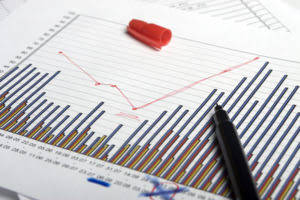Understanding Changes in Working Capital: Formula and Implications

Thus, it’s appropriate to include it in with the other obligations that must be met in the next 12 months. Still, it’s important to look at the how to calculate the change in net working capital types of assets and liabilities and the company’s industry and business stage to get a more complete picture of its finances. Most major new projects, like expanding production or entering into new markets, often require an upfront investment, reducing immediate cash flow.
- Generally speaking, a ratio of less than 1 can indicate future liquidity problems, while a ratio between 1.2 and 2 is considered ideal.
- Working capital is the amount of capital that a company has available to meet its short-term obligations, and it is calculated by subtracting current liabilities from current assets.
- My Accounting Course is a world-class educational resource developed by experts to simplify accounting, finance, & investment analysis topics, so students and professionals can learn and propel their careers.
- The formula to calculate the working capital ratio divides a company’s current assets by its current liabilities.
- It ensures smooth day-to-day operations and can influence a company’s creditworthiness and financial stability.
How do I calculate changes in NWC?

The net working trial balance capital (NWC) metric is different from the traditional working capital metric because non-operating current assets and current liabilities are excluded from the calculation. However, this can be confusing since not all current assets and liabilities are tied to operations. For example, items such as marketable securities and short-term debt are not tied to operations and are included in investing and financing activities instead.

Impact of Efficient Working Capital Management
It serves as a critical Record Keeping for Small Business indicator of a company’s immediate financial health and operational efficiency. Working capital is the difference between a company’s current assets and its short-term liabilities. Previously, Wal-Mart kept having to pay for inventory faster than it was paying its bills.

Calculate Working Capital for Each Period
By calculating working capital, you can make better decisions about spending and investing. Remember, a positive working capital means you can cover your expenses, while a negative one could signal trouble. Keeping an eye on your working capital can help your business stay healthy and grow. Net working capital is most helpful when it’s used to compare how the figure changes over time, so you can establish a trend in your business’s liquidity and see if it’s improving or declining. If your business’s net working capital is substantially positive, that’s a good sign you can meet your financial obligations in the future.

Working Capital Requirement Calculation Example (WCR)
However, it could also mean too much of your money is stuck in things like unsold products (inventory) or waiting for customers to pay their invoices (receivables). Calculating your working capital is a quick way to gain an overview of your business’ cash flow. The answer may be counterintuitive, because a negative change indicates that Current Assets are increasing more than Current Liabilities.
- You must consider and link what happens to cash flow when an asset or liability increases.
- The textbook definition of working capital is defined as current assets minus current liabilities.
- It provides insights into a company’s ability to cover its short-term obligations and invest in its daily operations.
- Examples of current liabilities include accounts payable, short-term debt payments, or the current portion of deferred revenue.
- Therefore, it is important for you to determine the optimal level of working capital.
- On the other hand, the inability to move stock ends up creating higher dues that drain the cash flow.




